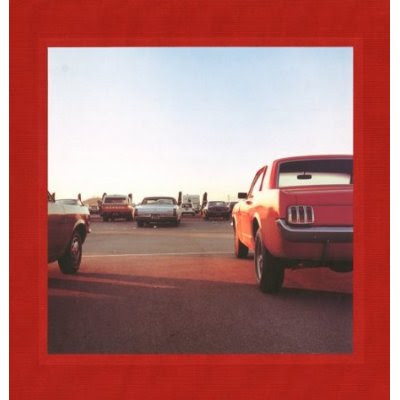Less than two years ago, the basement was nearly empty. The walls were painted a contractor-bulk-discount shade of white, and the durable red shag carpet was a convincing argument for built-in obsolescence.
Then came the flood.
It turns out that if your refrigerator installer buys the cheapest plastic hose for your ice-maker (as opposed to the pricey $12 variety), the thing might just burst in the middle of the night and do the Water Wiggle dance of doom—another homage to the 70s when you think about it. But you don't. And while your family and dog take refuge in a Residence Inn for a week to avoid injury and/or hearing loss from the 13 industrial fans running day and night, you don't yet realize that the ice-maker incident was in fact a baptism that would wash away the shag-a-delic past and lead to peace.
Granted, a minimalist gray monochrome is not everyone's idea of heaven, but for me it's the perfect backdrop for movies and photography.
Now, wasn't I going to talk about two square books on my coffee table? What's with the background, you ask? Well, two reasons. OK, no, three.
1. This blog is the closest I get to a journal, so I may as well document things.
2. There's a strange irony going on here (in the incorrect use of the word, which may as well be the correct use if you ask me)
3. It's just how my mind works.
I've already dealt with 1 and 3, so let me get to the books before I get to 2.
I have two shelves of nothing but photography books down here. All alphabetized. It's the closest I get to clutter in the man cave. I like to change out the books on the coffee table every few weeks, so right now I'm featuring two masters of square composition:
1. William Eggleston, 2 1/4

2. Anthony Hernandez, Waiting for Los Angeles

You can see pages from both Eggleston's and Hernandez's books through the "Booktease" feature at Photo-Eye Bookstore. What you will see is an inspiring collection of the mundane. The cover of Waiting for Los Angeles is one of several stunning images of tile in very utilitarian public spaces. In the introduction, Alain Sekula admires the "shimmering post-impressionist airiness and warmth" of the 27x27 square ceramic grid. "If we are reminded of the jumpy rhythms of Mondrian, it is Mondrian pushed back toward Seurat, and thus toward landscape, drowsy eyelashes diffracting bright summer light." The skeptic's valid reaction: Such poetic excess for tile! And besides, it's not as if Hernandez laid the tile himself. But of course, most photographers (or at least most of my favorite photographers) point at something and frame it. Their creative contribution is to make us stop and look.
On purely aesthetic grounds, not every photo in Waiting for Los Angeles has the appeal of the cover. As a whole, however, the book sheds light on waiting and on the spaces of waiting. As Sekula suggests, we start to realize that some people spend more time waiting than others. Waiting has its own politics.
The Eggleston book has equally stunning images of old signs, cars, shops, cafes, telephone lines, plastic flowers, radiators—more scenes of the ordinary that have to be seen to to be, well, seen, I guess. These are the types of photos that inspire me to appreciate my surroundings, however uninspired they may seem.
And now for the irony:
Both books take us back a few decades—back to an aesthetic we might associate with the 70s. Many of the buildings have since been renovated or destroyed. Sekula notes that a 2002 trip to the spot of the tile mosaic was fruitless. The colorful grid was nowhere to be found. "It turned out to have been completely covered with a thick layer of glossy battleship-grey enamel anti-graffiti paint." Luckily, I can look at the tile in the serenity of the man cave, where all signs of the 70s are contained within a couple of beautiful square books on my gray coffee table in my gray room. If I'm lucky, I might take some great photos of 70s-era relics. Perhaps something to hang on my dark gray walls.





